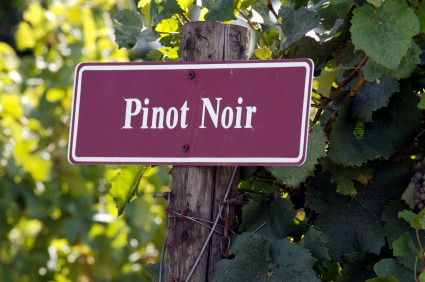Everyone says Pinot Noir

Like many other wine lovers I adore certain Burgundy wines. The Grand Cru and Premier Cru from 20 or more ‘vignerons’, ‘negociants’ and ‘eleveurs’, from Rousseau to Trapet, from Lignier to Roumier, those of Coche Dury, the late Anne Claude Leflaive and of Dominque Lafon. It took me years to fully comprehend this wines and this involved visiting wineries and vineyards and making sacrifices in order to buy some bottles. I studied areas, read the studies of Coates and Peppercorn and even learned the names and basic characteristics of the vineyards. Today when someone wants to have a discussion about Burgundy wines, or those from Cote d’Or in particular, I ask them to name all the Grand Cru villages, the way Eric Rousseau once asked me to do before tasting his wines. I also do this to not repeat the same mistake I made when I interviewed Madame Lalou Bize Leroy and began by saying: “You being one of the greatest producers of Pinot Noir…”. She immediately cut me off and replied that there must have been a “misunderstanding”, because “I never ‘do’ Pinot Noir. I have ‘done’ Romanée Conti, La Tache and Richebourg. The Americans ‘do’ Pinot Noir in Oregon and California, not me”. I felt like a total fool and ever since then have made point never to make the same mistake. For her, zones and vineyards were much more important and decisive than a varietal. Thus when the subject is Burgundy one must know exactly what they are talking about. One must know that in Gevrey Chambertin there is Chambertin, Chambertin Clos de Beze, Chapelle, Charmes, Griotte, Latricieres, Mazy and Ruchottes. And that in Morey Saint Denis there are Clos Saint Denis, de Tarte, de Lambrays and de la Roche. And so on and so forth. It is not difficult to remember them all, especially if you have been there, and it is essential that you know them in order not to come across as a distracted or superficial wine lover. It is also important to know that Gevrey Chambertin is home to the more challenging and full-bodied reds, while Vosne Romanée is has the more elegant and balanced ones. Last but not least, it is good to know perfectly the value of each vintage, which is almost always different for the reds and whites. Better yet is to also know something about the producers, the subzones and annual weather conditions because they are fundamental in order to get your bearings in the complex reality that composes the allure of these wines. All this also helps to understand why many wines from such a difficult area for winegrowing are not so elitist or of good quality and that it is, in fact, easier to come across mediocre wines there than in some secondary regions in Italy. For this reason the French system of denominations is helpful, even if it is a bit complex, because it is so precise in attributing merits and value. And so if you ever run across, as I have, bold praise for a wine with a simple denomination of just Burgundy or Pinot Noir or Chardonnay from Burgundy and perhaps even produced by a famous winery, remember that it would be like hearing someone singing the praises of Armani underwear and not for his high fashion suits. To each their own.

 Italiano
Italiano







